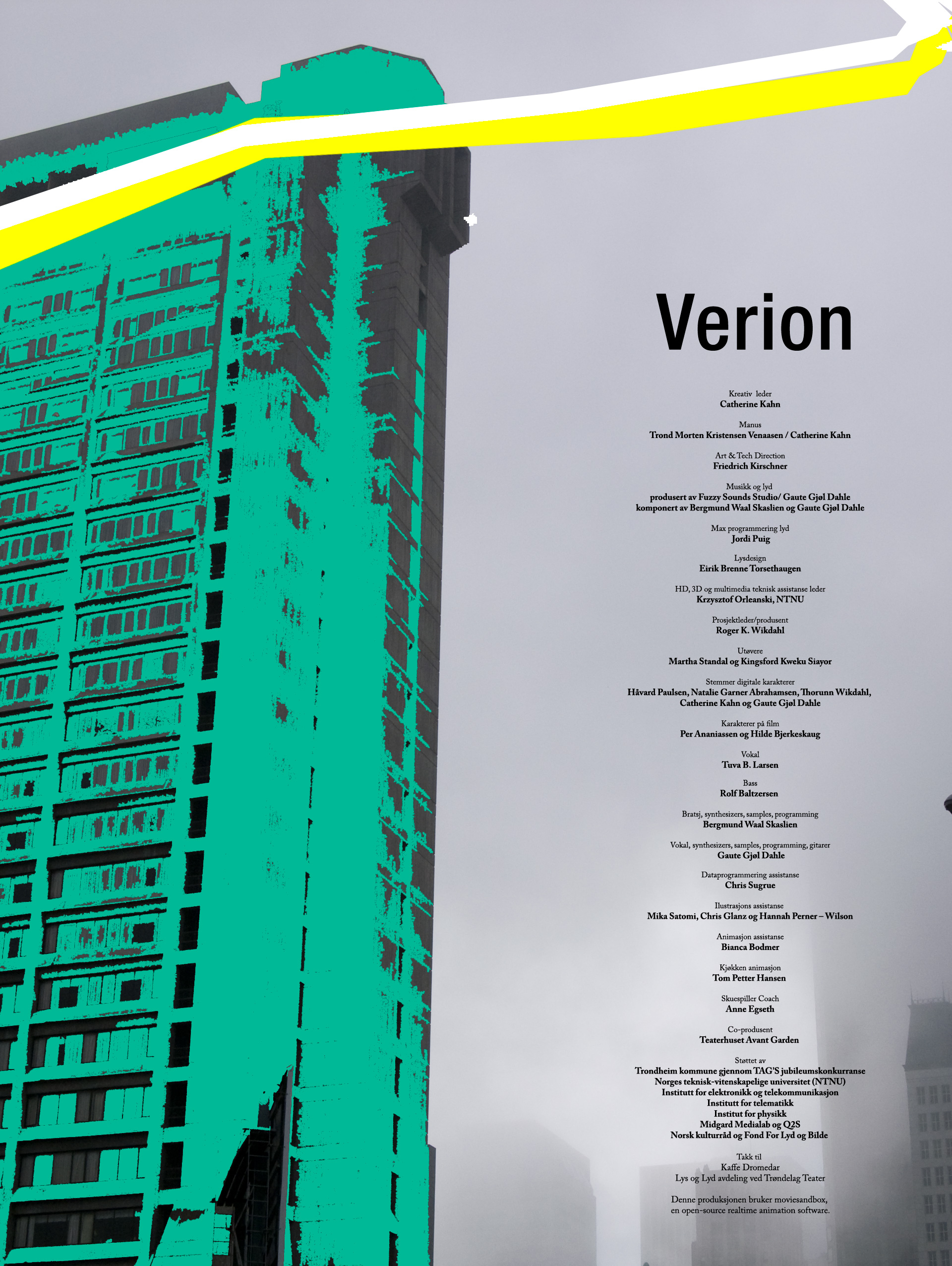Verion premiere
Yesterday evening at 7 pm in Trondheim, Norway we premiered Verion. In the week before, Verion had coverage in all major newspapers, national radio and national television - in Norway...
Initial reception was good, as far as audience clapping can be a measure for that.
I plan on posting a sort of post-mortem for the production as soon as it's finished.

The characters, scenes and overall setup for the production will be made available with Moviesandbox for people to play around with.
And I'll upload some video and screenshots soon.
This is also the time to thank a couple more people than those who fit in the credits:
* Zachary Lieberman and Theo Watson for openframeworks - an open source c++ framework that we used in some of the content creation tools for this production, and in some parts of Moviesandbox.
* Theo Watson for his Video Input library - used for Video-Textures in Moviesandbox
* Eyebeam Center for Art and Technology, for providing the initial resources to get Moviesandbox off the ground as an Open-Source project.
* Michael Nitsche of GeorgiaTech for feedback and an initial testbed for Moviesandbox




